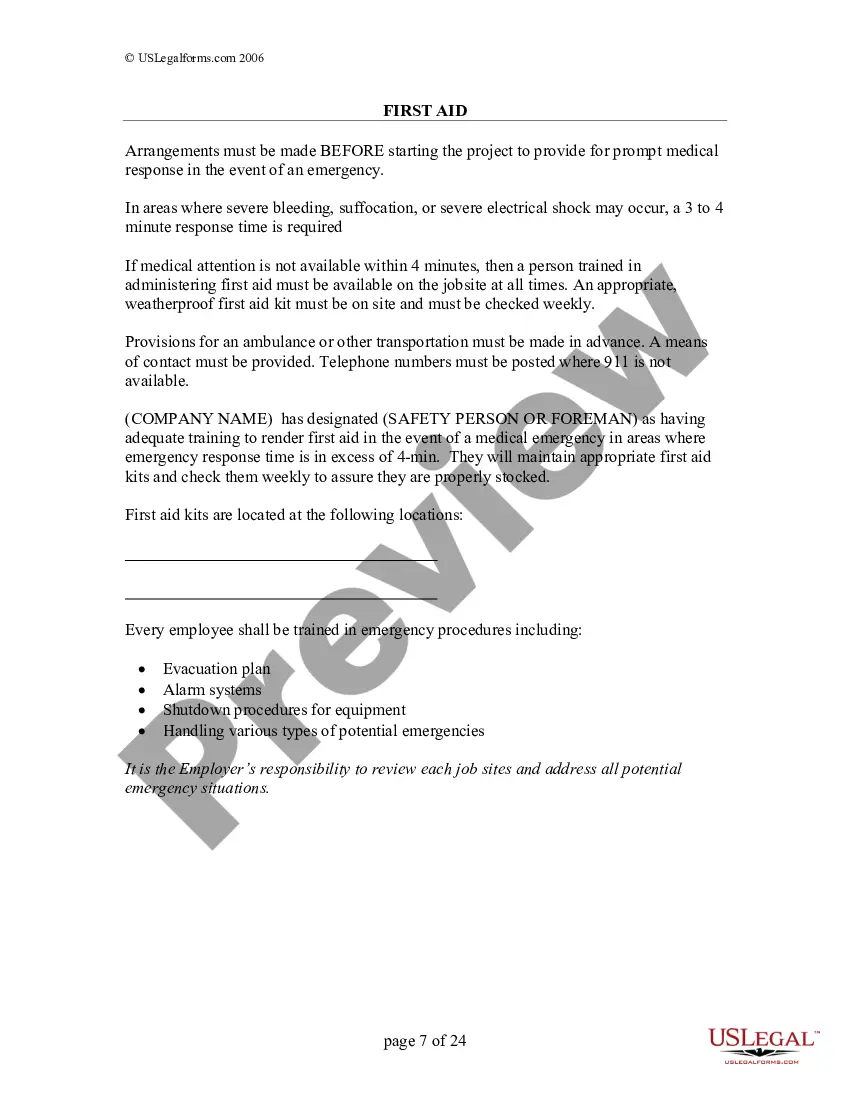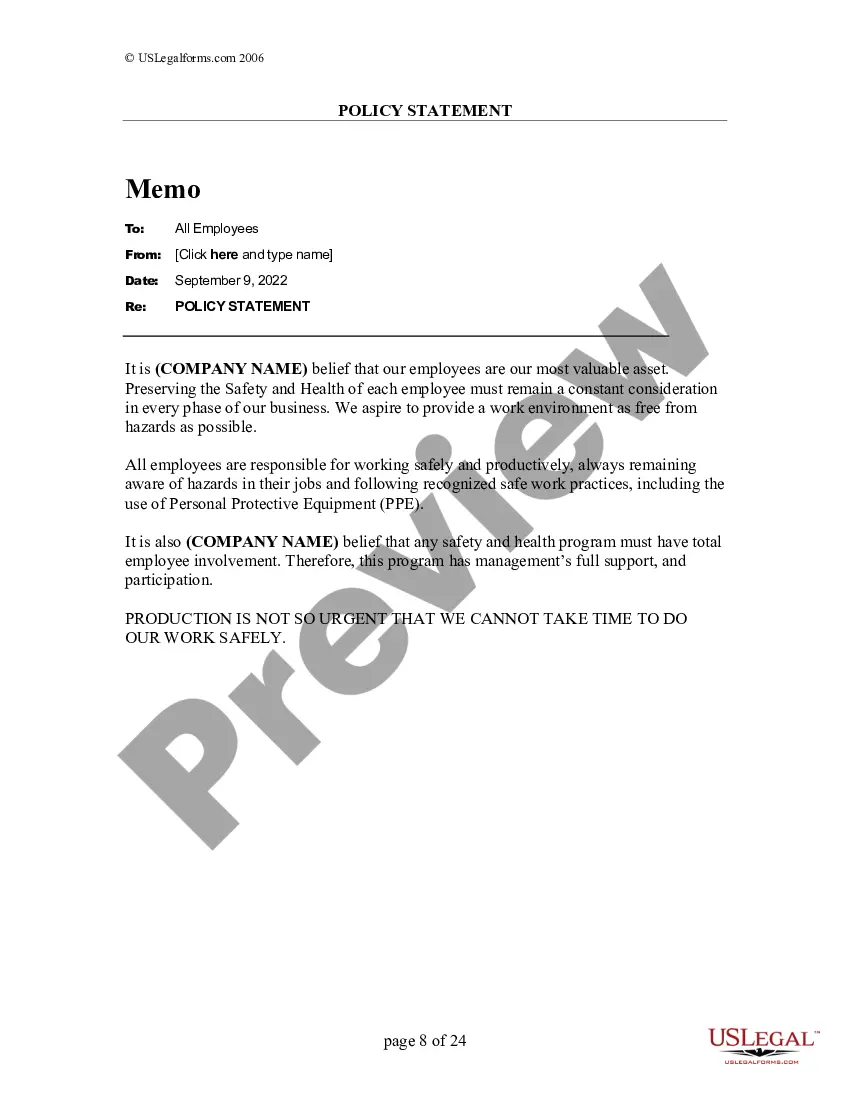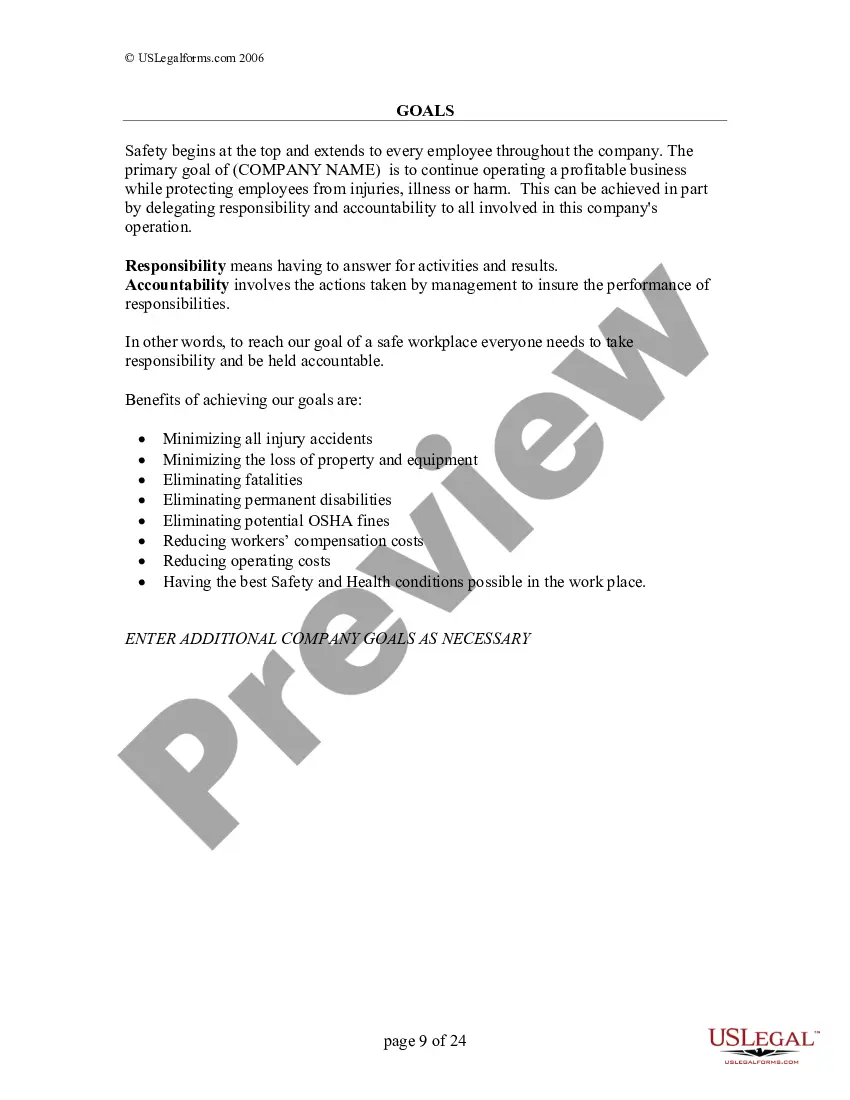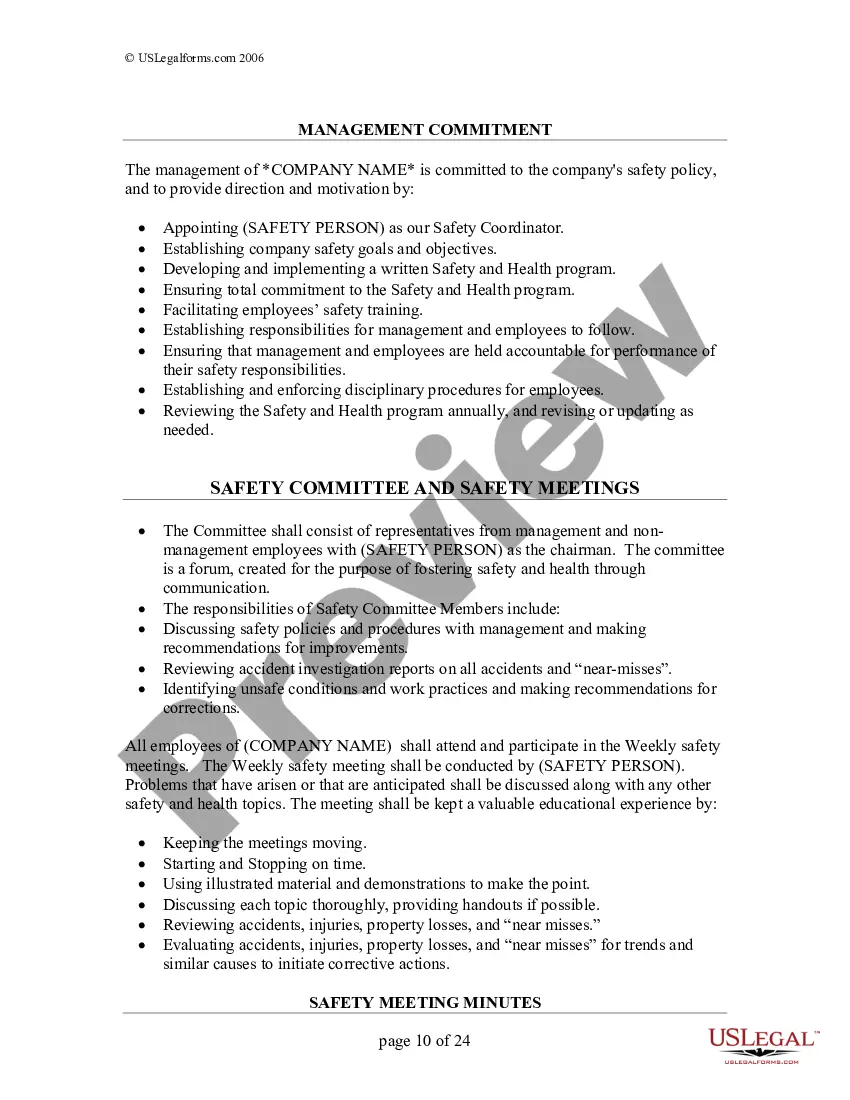The Utah Construction Safety and Health Plan is a comprehensive set of guidelines and regulations designed to ensure the safety and well-being of workers in the construction industry in the state of Utah. It serves as a framework for employers, contractors, and workers to create a safe working environment and prevent accidents, injuries, and illnesses on construction sites. The plan covers various aspects of construction safety and health, including hazard identification and assessment, training and education, communication and documentation, personal protective equipment (PPE), emergency preparedness, and incident reporting and investigations. It emphasizes proactive measures to eliminate or minimize potential hazards and encourages a culture of safety on construction sites. One of the key components of the Utah Construction Safety and Health Plan is the identification and assessment of hazards. This involves identifying potential risks and evaluating their severity and likelihood of occurrence. Hazard assessments help in developing appropriate control measures to mitigate hazards and prevent accidents. Training and education are also crucial aspects of the safety plan. Employers are required to provide adequate training to workers on various topics such as recognizing hazards, using PPE correctly, operating machinery and equipment safely, and emergency response protocols. Regular safety meetings and toolbox talks are encouraged to ensure ongoing communication and reinforce safety practices. Effective communication and documentation are fundamental to the success of the safety plan. Employers are required to have a clear and concise safety policy, which is communicated to all workers. Safety logs, incident reports, and safety records must be maintained to track accidents, near misses, and safety improvements. The Utah Construction Safety and Health Plan also emphasizes the importance of personal protective equipment (PPE). Employers must identify the appropriate PPE for each task and ensure its availability and proper use. Regular inspections of PPE and equipment are conducted to ensure their functionality and compliance with safety standards. Emergency preparedness is another critical aspect of the safety plan. Employers are required to have written emergency response plans in place, conducting drills regularly to ensure workers are prepared for potential emergencies such as fires, natural disasters, or accidents. First aid supplies and trained personnel must be readily available on construction sites. Lastly, the plan includes procedures for incident reporting and investigations. Employers are required to report all accidents, injuries, illnesses, and near misses to the appropriate regulatory bodies. Thorough investigations are conducted to determine the root causes of incidents and implement corrective actions to prevent future occurrences. Although there are no specific types of the Utah Construction Safety and Health Plan, the plan is tailored to meet the needs and requirements of various construction projects. It applies to all sizes and types of construction activities, including residential, commercial, industrial, and public works projects. Contractors, subcontractors, and self-employed individuals are all obligated to comply with the plan's requirements to ensure a safe and healthy construction industry in Utah.
Utah Construction Safety and Health Plan
Description
How to fill out Utah Construction Safety And Health Plan?
You can devote several hours online attempting to find the legal papers format that fits the state and federal specifications you will need. US Legal Forms offers 1000s of legal types which can be evaluated by specialists. It is possible to down load or printing the Utah Construction Safety and Health Plan from your support.
If you already possess a US Legal Forms account, it is possible to log in and click the Acquire key. After that, it is possible to total, modify, printing, or indicator the Utah Construction Safety and Health Plan. Every single legal papers format you buy is your own property permanently. To get one more backup for any acquired form, go to the My Forms tab and click the corresponding key.
If you work with the US Legal Forms website initially, follow the basic recommendations under:
- Very first, ensure that you have selected the proper papers format to the county/metropolis of your liking. Look at the form explanation to make sure you have picked the right form. If readily available, make use of the Review key to look throughout the papers format also.
- If you wish to get one more edition of your form, make use of the Look for area to get the format that meets your requirements and specifications.
- Upon having located the format you would like, just click Buy now to continue.
- Choose the pricing plan you would like, type in your accreditations, and sign up for your account on US Legal Forms.
- Comprehensive the financial transaction. You can utilize your bank card or PayPal account to fund the legal form.
- Choose the formatting of your papers and down load it to the system.
- Make modifications to the papers if required. You can total, modify and indicator and printing Utah Construction Safety and Health Plan.
Acquire and printing 1000s of papers layouts using the US Legal Forms web site, which provides the largest collection of legal types. Use professional and express-distinct layouts to handle your business or person demands.












